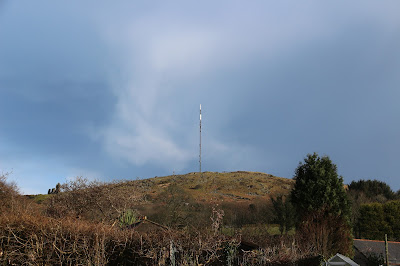 |
| The transmission mast on the top of Caradon Hill loomed over us as we set off. An unusual angle for us as we normally see it from the other side. We've got a good view of it from our garden. |
Quid me anxius sum? (Alfred E Neuman, Mad Magazine circa 1956). Facio, ita.
Friday, 26 January 2018
Four seasons in a day walk from Crow's Nest
Waking up to drizzle was not a particularly inspiring start to the day, but it was forecast to be reasonable for the morning, deteriorating in the early afternoon. However as we drove up the lanes towards our starting point just off Bodmin Moor, the clouds and mist descended and we passed through a very heavy downpour of hail. But, despite that, it was not cold and to my surprise, seventeen of us turned up for the walk, all well clad with waterproofs and walking sticks. And a good walk it turned out to be, even if we did experience four seasons on the way around - sunshine and blue skies, rain, hail, sleet and thunder and lightning. It was one of those walks where you feel very virtuous for getting out there and doing it.
Subscribe to:
Post Comments (Atom)














No comments:
Post a Comment